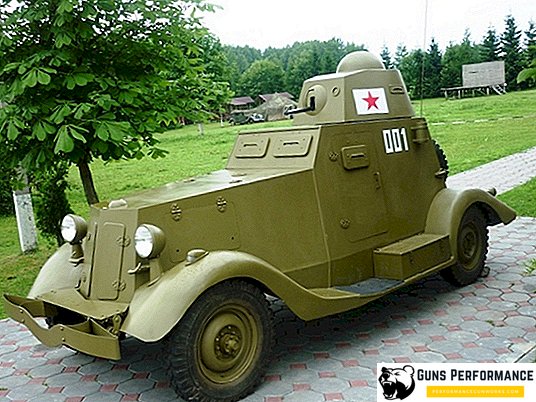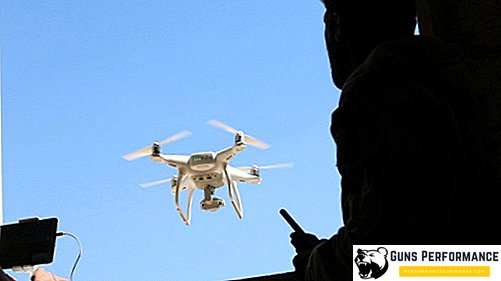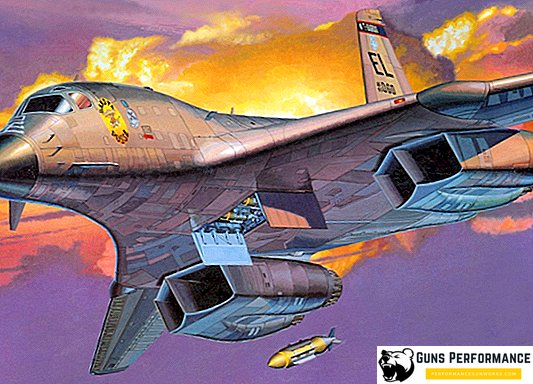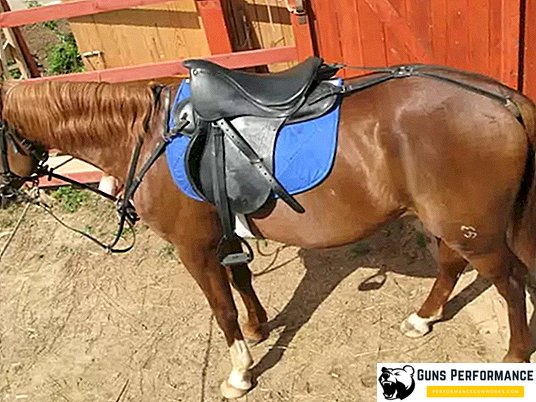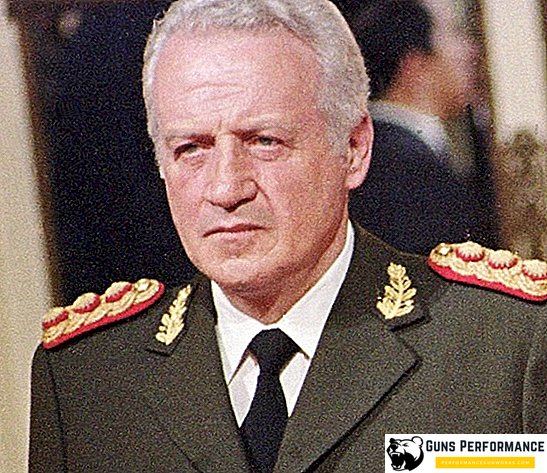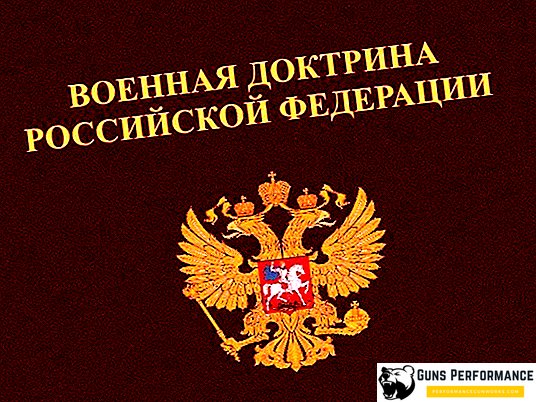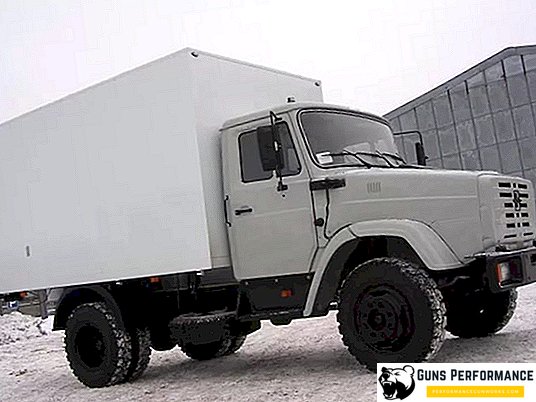Among the dozens of types of combat aircraft that took part in the Second World War, the most famous is undoubtedly the German fighter Messerschmitt Bf.109 (in the USSR it was usually called the Me-109) and there is every reason for this. This machine was the main fighter of the Luftwaffe, you can still add that the Messerschmitt Bf.109 is the most massive fighter and one of the most massive aircraft in the history of aviation. Since the beginning of mass production, almost 34 thousand Messerschmitt Bf.109 various modifications were built.
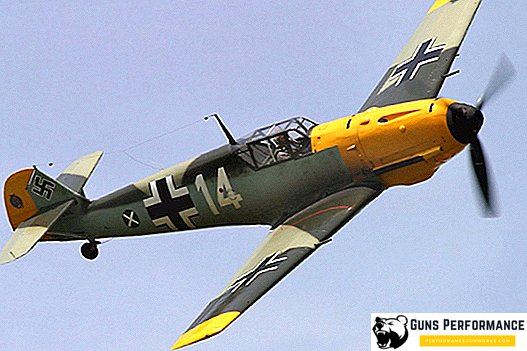
This fighter was really beautiful machine, it can be safely called a design masterpiece. At the time of its creation, it was superior to similar aircraft of other countries in all technical specifications.
His first flight, "Messerschmitt" Bf.109 made in 1935, this fighter participated in the Spanish civil war, in all the battles of the Second World War, and in some countries it was exploited until the early 60s.
German fighter pilots were the best in that war, in the personal account of a dozen German aces more than a hundred shot down enemy aircraft. So, most of these victories were obtained precisely on various modifications of Messerschmitt Bf.109.
At the time of its creation, the Messerschmitt was superior to all similar aircraft from other countries of the world. Even five years later, after the start of World War II, the Allies did not have a fighter that would be compared with a German car in its technical characteristics. Only the English “Spitfire” could withstand it on equal terms, but also with its Messerschmitt Bf.109 exceeded in a number of parameters.

German designers did not stand still, but constantly improved their offspring. As a result, until the end of the war, the Luftwaffe had a fighter who, at a minimum, was not inferior to or better than the best allied aircraft. It should be added that in the design of this aircraft there was a significant potential for further modernization, during the war the main technical characteristics of the machine were significantly improved. Few fighter has such a number of modifications.
The history of the aircraft Messerschmitt Bf.109
At the time Hitler came to power, the aviation industry in Germany practically did not exist: only 4 thousand people were employed in this area. The Nazis considered the development of the air force to be one of their priorities, therefore considerable resources were allocated to the aviation industry.

In 1935, the Luftwaffe was created. His leadership immediately stated that the country's aircraft fleet was obsolete and was actively engaged in updating it. Back in 1934, a competition was announced for the creation of a new all-metal fighter at a speed of at least 450 km / h. On the new machine they planned to install a liquid-cooled engine.
The task for the development of a new fighter received the largest German aircraft manufacturers: Heinkel, Focke-Wulf and Arado. Initially, Willy Messerschmitt did not participate in the competition, he was suspended on the grounds that his company Bayerische Flugzeugwerke (Bf.) Had no experience in creating high-speed aircraft.
Not having received an invitation to participate in the contest, Messerschmitt began developing a similar machine for the Romanian Air Force, which led to a scandal and trial. Only after this (and the intervention of Germany’s top management) was Bayerische Flugzeugwerke allowed to participate in the competition. Although, Messerschmitt himself did not really believe in his victory in it.
Perhaps that is why the designers of Bayerische Flugzeugwerke did not follow the task they received too much. In the work on the new machine, the company's engineers used technical solutions that were obtained during the development of the high-speed sports aircraft Messerschmitt Bf.108 Taifun. The result was an all-metal fighter with excellent aerodynamic characteristics, with a closed cockpit and retractable landing gear.

The first flight of the prototype fighter took place on May 28, 1935, the Rolls-Royce Kestrel British engine was installed on this aircraft, because the work on the glider progressed much faster than the development of the engine.
The main rival of the Messerschmitt was the prototype of the aircraft, developed by Heinkel. The rest of the cars that participated in the competition were significantly weaker.
The fighter created by Bayerische Flugzeugwerke was simpler, cheaper than the Heinkel prototype, had a slight speed advantage. But despite this, the leadership of the Luftwaffe was inclined to Henkel's car. Without making the final choice, the military made a pre-production order for 10 aircraft from each manufacturer.
An important role in the further fate of the Messerschmitt Bf.109 fighter was played by the beginning of the Spanish civil war. There was fighting the German Legion "Condor", which gave an excellent opportunity to test the new fighter in combat conditions.

Airplanes Ne.112 and Messerschmitt Bf.109 were sent to Spain. Tests in combat conditions showed the complete superiority of the Messerschmitt machine.
In 1937, Messerschmitt Bf.109 was adopted.
Messerschmitt modifications
Bf.109B Messerschmitt Bf.109B Bruno. This is the first production machine, which began to be produced at the Augsburg plant in February 1937. The aircraft was equipped with a Jumo 210 engine (680 hp.). Armed fighter was three 7.92-mm machine guns MG 17.
Bf.109C This modification is also called Messerschmitt Bf.109C Caesar. Its release began in the first months of 1938. The aircraft was installed more powerful engine Jumo 210A - 700 liters. with. The speed increased to 468 km / h.
Bf.109D Messerschmitt Bf.109D Dora. This model should have been equipped with a new Daimler Benz 600 engine.

Bf.109E Messerschmitt Bf.109E Emil was the first truly mass modification of the aircraft. The production of this fighter was launched in early 1939. On the "Emil" engine was installed Daimler-Benz DB 601, which was very reliable, compared with its predecessors.
Later on the Bf.109E installed the front armored glass in the cockpit and the armor plate, which covered the entire cross section of the fuselage.
The beginning of the Battle of England showed that Bf.109E is very effective against the English “Spitfires” Mk 1, but the emergence of more sophisticated modifications of British fighters led to the development of Bf.109F (“Friedrich”). This fighter was armed with two 7.92-mm machine guns and a 20-mm automatic cannon that fired through the propeller shaft.

Bf.109G Messerschmitt Bf.109G Gustav - the most massive modification of the fighter. This aircraft was equipped with a more powerful engine Daimler-Benz DB 605. The fighter’s weapons were also strengthened, the Gustav received 13-mm machine guns, instead of 7.92-mm.
The new machine began to arrive in the troops in 1942. Researchers identify two options for Bf.109G: G-5 and G-6.
After the Messerschmitt Bf.109G appeared, it became clear that the designers had squeezed out of the design of the fighter everything possible, the modernization resource of the machine had been exhausted. However, in 1943, the Messerschmitt was still superior to its main competitors, so the development of the new Me.209 fighter, which was to replace the Messerschmitt Bf.109, was practically suspended. At that time, the situation on the fronts was in favor of the Germans, so this solution seemed optimal.
Bf.109K Messerschmitt Bf.109K Kurfurst. This machine appeared at the end of 1944, it was installed on an even more powerful Daimler Benz 605 SDM / DCM engine, which increased the speed of the fighter to 695 km / h. The armament was also strengthened: two 30-mm cannons or three 20-mm cannons were mounted on the fighters.

Bf.109TModification, which was developed for basing on aircraft carriers. The only German aircraft carrier was never built, so the planes were used on airfields with a shorter runway. This modification of the "Messerschmitt" differed reinforced chassis and fuselage design, modified wing design and the presence of the landing hook.
Messerschmitt construction description
"Messerschmitt" Bf.109 - all-metal monoplane with a low wing trapeziform shape. The cockpit was located in the central part of the fuselage, in front of it was a water-cooled engine. Behind the cockpit and under it were two fuel tanks with a capacity of 400 liters. The rear tank and cab were separated by an armored partition.
The design of the cockpit and the use of high-quality plastic for glazing provided the pilot with an excellent overview. The Messerschmitt Bf.109 was equipped with an oxygen apparatus and a radio station, and the aircraft recognition system was installed on the latest models.

The wings of the fighter had a very low weight. The wing weight of the first modifications was only 130 kg, which was very convenient for maintenance. This was achieved by the original chassis design, which was attached not to the wing, but to the fuselage. True, this decision significantly reduced the gauge, which reduced the stability of the fighter on the ground.
Different engines were installed on different versions of the fighter. Motors later models have a significantly higher power.
The armament of different modifications of the aircraft is also very different. The first series of fighters were armed with machine guns of 7.92 mm caliber; in later versions, more powerful 13 mm machine guns and automatic guns were installed. In 1944, 30-mm cannon equipped with high-explosive shells, hitting one such ammunition guaranteed destroyed fighter. 3-5 bombs were needed on a bomber.

Fighting Messerschmitt
Spain
The debut of the Messerschmitt Bf.109 fighter was the Spanish Civil War. In this country, the German pilots fought, which formed the so-called Legion "Condor". This unit was armed with outdated He.51 aircraft, which hopelessly lost to the Soviet I-15 and I-16 vehicles. Therefore, in Germany it was decided to arm the Condor with the newest Bf.109, and at the same time to test new fighters in combat conditions. As expected, the Messerschmitt was superior to Soviet aircraft in almost all respects, with the exception of maneuverability. The German fighter had a greater horizontal speed, was faster in a dive, had a larger ceiling.
In Spain, the Germans put 130 Messerschmitts of various modifications, lost 40 cars. On account of "Condor" 314 wins, most of them merit Bf.109.
Polish campaign and the seizure of Europe
Bf.109 took part in the seizure of Poland. The most modern Polish fighter PZL P.11 had a speed of less than 400 km / h and was not a serious opponent for the Messerschmitt. In Poland, the Germans lost 67 fighters, the vast majority of them were destroyed by anti-aircraft fire.

Capturing most of Europe cost the Germans little blood, while the Messerschmitts performed mainly auxiliary functions. The situation changed during the French campaign, in which German fighters had to face the French Air Force and British aircraft.
Messerschmitt Bf.109 surpassed the French fighter jets in terms of flight performance, which led to the fact that the Luftwaffe quickly gained air supremacy. This was one of the factors that led to the lightning defeat of France. During the fighting over Dunkirk, the situation changed somewhat, here the Germans first encountered the English fighter Spitfire, which was almost as good as Bf.109.
Battle for england
This is an epic air battle in which the Luftwaffe first encountered a worthy opponent. The British Spitfires and Hurricanes were almost as good as the Messerschmitt in their technical characteristics, the British pilots were skillful and well-motivated, and the number of airplanes on both sides was about equal.

The advantage of the British was that they fought over their territory, they were helped by anti-aircraft artillery, and radar stations predicted the direction of the strike and helped to concentrate forces to repel it.
Air battles with a strong contender showed the strengths and strengths of the “one hundred and ninth”. The German fighters had more powerful weapons, they outnumbered their rivals in vertical maneuvers, the Bf-109 was faster than the Spitfire at high altitudes. At altitudes of less than 4.6 thousand meters in horizontal flight "Spitfire" was faster and more maneuverable.
In this campaign, the Messerschmitts were often used as cover fighters, and this aircraft was very poorly suited for such a role.
In the Battle of England, the Germans lost 530 Bf-109.

Eastern front
At the time of the start of Operation Barbarossa, the Germans had assembled about a thousand Bf-109s on the western border of the USSR.
The first air battles showed a significant advantage of the Messerschmitt over the main Soviet aircraft: I-15, I-16, I-153. Powerful engine, perfect aerodynamic shape of the aircraft gave German pilots a tangible superiority in air combat.

Soviet aircraft were created for maneuvering battles on horizontals that the Germans never went to. The Messerschmitt had an advantage in horizontal speed and dive speed. The German pilot at any time could simply get out of the battle, there were no chances to catch up with the Soviet fighters. A favorite way to attack the German aircraft was an attack from an elevation, during which the Bf-109 approached as close as possible and opened fire. After the attack, he again went "hill" up.
At the beginning of the war, the Soviet air force suffered significant losses. The main aircraft, which were in service with the Red Army, suffered from "childhood diseases", their design has not yet been worked out. Technological culture in the USSR was significantly inferior to German, the characteristics of production aircraft were often worse than those of prototypes, which was unthinkable for Germany. With the outbreak of hostilities and the evacuation of enterprises, the quality of machines has further decreased.
It was very bad with the training of flight personnel, the time and resources for this were simply not enough. According to statistics, every seventh Soviet pilot died during the first flight.

In 1942, modernized types of Soviet aircraft appeared, which significantly complicated the lives of German pilots. The air battle in the sky of Kuban put an end to the domination of German aviation. At the final stage of the war, the quantitative superiority of Soviet aviation was overwhelming. In addition, the latest modifications of the Yak and La fighters could withstand the Bf-109 on equal terms.
In the sky of Germany
Beginning in 1942, the Germans were forced to use more and more fighters to protect their cities and industrial facilities from Allied air raids. Heavy British and American bombers were well armed and withstand up to 20 hits of 20-mm shells.

They flew in dense formation and opened massive fire on fighters, so it was not easy to hit such a bomber. A little later, “flying fortresses” began to be accompanied by fighter jets, which made the task even more difficult.
It should also be borne in mind that at that time the level of training of the German pilots had fallen markedly, while the Allied pilots had, on the contrary, grown. Very often, when attacking an allied convoy, the Bf-109 pilots could not even protect themselves from the American Mustangs or the English Spitfires, let alone try to damage the bombers.
In addition, at the end of the war, the Luftwaffe experienced an acute shortage of fuel.
Flight performance of the Messerschmitt Bf.109 fighter
| Modification | Bf 109E-1 |
| Wingspan, m | 9,85 |
| Length m | 8,65 |
| Height, m | 2,50 |
| Wing area, m2 | 16,40 |
| Weight, kg | |
| empty aircraft | 1840 |
| normal takeoff | 2500 |
| engine's type | 1 PD Daimler-Benz DB 601A |
| Power, hp | |
| takeoff | 1 x 1050 |
| on high | 1 x 1100 |
| Maximum speed, km / h | 548 |
| Cruising speed, km / h | 477 |
| Practical range, km | 660 |
| Maxi. rate of climb, m / min | 930 |
| Practical ceiling, m | 10500 |
| Crew | 1 |
| Armament: | 2 x 20 mm MG FF cannon, 2 x 7.9 mm MG 17 machine gun mounted on the engine mount above the engine. |


